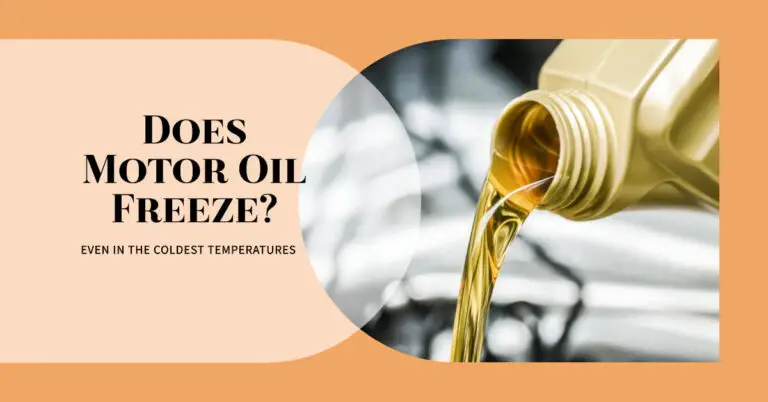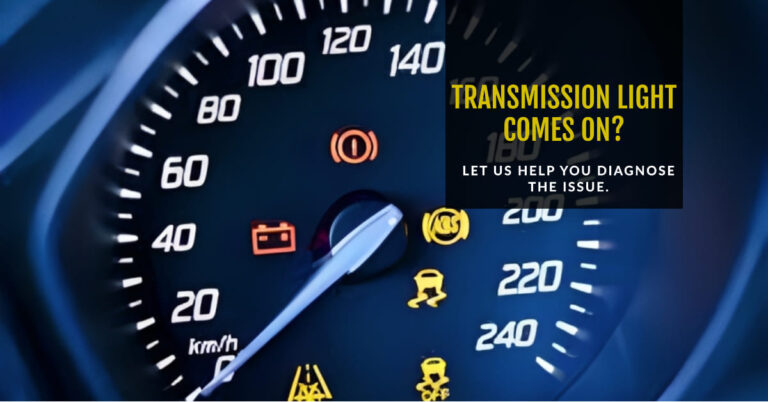Symptoms Of A Bad Intake Manifold Gasket & Replacement Cost

Have you noticed your car behaving strangely lately? Losing power when accelerating, overheating, or strange noises coming from the engine bay? These could all be signs of a failing intake manifold gasket in your engine.
An intake manifold gasket is a small but vital rubber seal between the intake manifold and cylinder head. Its job is to evenly distribute a mixture of air and fuel from the intake manifold into the combustion chambers.
When this gasket fails, it causes an air leak that reduces engine performance, fuel economy, and emissions. Left unaddressed, it can lead to overheating and catastrophic engine damage down the road.
In this 3,000+ word guide, you’ll learn:
- What the intake manifold gasket does and how it works
- The most common symptoms of a bad intake manifold gasket
- What causes these gaskets to fail
- How much it costs to replace an intake manifold gasket
- Tips for preventing intake gasket failure
- When to proactively replace the gasket
Understanding the leading signs of intake gasket failure and getting it replaced promptly can help avoid extensive repairs and save you money in the long run. Let’s take a closer look under the hood.
Table of Contents
What Is the Intake Manifold Gasket?
The intake manifold is a series of tubes that distributes air coming into the engine through the air filter and throttle body. It is then mixed with fuel from the fuel injectors and makes its way into the combustion chambers within the cylinders.
Sealing the connection point between the intake manifold and the cylinder heads is the intake manifold gasket. This crucial rubber or plastic gasket ensures an airtight seal so the air-fuel mixture only enters the combustion chamber through the intake valves, and nowhere else.
Without a properly sealing gasket, air and fuel can escape through any gaps (known as vacuum leaks) and lead to the host of problems we’ll cover next. Intake manifold gaskets take a lot of abuse from engine vibrations, heat cycling, torque pressure from bolts, and more. Over time, they gradually harden and lose their sealing capabilities.
Most vehicles have one intake manifold gasket, while V-shaped engines may have two – one for each cylinder head. They are relatively inexpensive parts, but labor costs make their replacement quite pricey because the intake manifold must be removed for access.
Now let’s review the most common signs that your intake manifold gasket is failing and allowing an air leak.
Symptoms of a Failing Intake Manifold Gasket
There are several noticeable symptoms that can alert drivers to the fact that the intake manifold gasket is deteriorating and needs to be replaced. Here are the top signs of a leaky intake manifold gasket:
1. Engine Misfires
One of the most common signs of a leaking intake gasket is constant engine misfires, also called surging. What’s happening is that the air leak is causing unmetered air to be introduced into the cylinders. This disrupts optimal fuel combustion and causes misfiring, which you’ll feel as noticeable shuddering as you accelerate.
Misfiring can damage the catalytic converter and oxygen sensors over time. It also leads to reduced engine performance and decreased fuel economy as combustion is no longer happening properly.
2. Noticeable Loss of Engine Power
Along with misfiring, you may experience a lack of power when accelerating as the engine computer detects issues and makes adjustments to compensate. This lack of power is especially evident at lower RPMs. Pressing the accelerator pedal may feel unresponsive because of the air leak tricking sensors.
The engine has to work harder with less efficiency because of the imbalance in the air-fuel ratio. Horsepower and acceleration suffer significantly.
3. Engine Overheating
One overlooked symptom of a bad intake gasket is engine overheating. As the gasket deteriorates, coolant can leak out leading to low coolant levels. This causes the engine to run hotter, especially in warmer weather or when idling.
Left unchecked, it could lead to catastrophic engine damage from overheating. Keep an eye on your temperature gauge and if it’s running too hot, shut off the engine immediately and get it inspected for leaks. Top off coolant levels in the meantime if needed.
4. Strange Noises from the Engine
Vacuum leaks from a damaged intake gasket can make some unusual noises you wouldn’t normally hear. Listen for a loud sucking, whistling or hissing sound coming from the engine bay.
This is the sound of extra air being sucked into the intake from the gaps between the manifold and head. The noises are most noticeable at idle when the engine is under less load. As RPMs increase the sounds can disappear.
5. Check Engine Light Comes On
One surefire indicator the car’s computer has detected an issue with the air-fuel ratio is when the check engine light illuminates. The onboard diagnostics system is reporting codes related to emissions levels, oxygen sensor readings, or the mass airflow sensor.
Common P-codes associated with intake gasket leaks are P0171, P0174, P0401, P0404, P0405. Have the codes scanned at an auto parts store or repair shop to pinpoint the likely culprit. The intake manifold gasket will need to be inspected.
6. Failed Emissions Test
Air leaks are detrimental to overall engine efficiency and emissions output. Excess air entering the cylinders throws off the precise air-fuel ratio the computer is trying to maintain.
This causes incomplete combustion and high carbon monoxide levels that will almost certainly lead to a failed smog test. Get any emissions test failures diagnosed for vacuum leaks and fix them before your next test.
Pay attention for any of these common symptoms of an intake manifold gasket that has gone bad. Next, we’ll look at what typically causes them to fail in the first place.
What Causes an Intake Manifold Gasket to Fail?
Intake manifold gaskets gradually fail over time from normal wear and tear. But there are also a few key culprits that can hasten their demise and lead to premature air leaks:
Age and Wear
Intake manifold gaskets are made of rubber or plastic and have to endure extreme temperatures and high pressure. Over years of heat cycles, they slowly harden and the sealing edges can develop microscopic cracks or openings.
Most will need replacement between 60,000 to 100,000 miles depending on driving conditions and maintenance. Short trips and frequent cold starts accelerate deterioration.
Improper Installation
If the intake manifold bolts are not torqued down to the proper specifications, it can result in a warped manifold or uneven seal. This allows gaps and leaks to develop quickly. Proper torque specs must be followed to avoid this amateur mistake.
The gasket surface must also be checked for any debris or imperfections during install. Any nicks or dust trapped can prevent a smooth sealing surface and promote air leaks. Proper cleaning and installation is key.
Engine Overheating
Consistent engine overheating is damaging for intake manifold gaskets, head gaskets, and the whole cooling system. The extreme heat can warp and crack the gasket, destroying its sealing capabilities.
Any underlying overheating issues like a bad thermostat, water pump, or head gasket leak need to be addressed immediately to avoid ruining the new intake gasket.
Knowing what typically causes failure can help you be proactive about maintenance and repairs to maximize the gasket’s lifespan.
Now let’s look at what you can expect to pay for an intake manifold gasket replacement.
Intake Manifold Gasket Replacement Cost
Replacing an intake manifold gasket is typically anywhere from a $400 to $900 job. The repair cost is driven up by the extensive labor it takes to access this sealed component and remove the intake manifold just to replace a $25 part.
Here is a breakdown of what’s included:
Parts Cost
- Intake manifold gasket set – $25 to $100 depending on vehicle. This will include all gaskets for a complete job.
- Intake cleaner – $10 for cleaning mating surfaces. Avoid liquid gasket sealants.
- Any damaged vacuum lines should be replaced at the same time.
Labor Cost
- On most vehicles, labor will be 4 to 8 hours for proper intake manifold removal, gasket replacement, cleaning mating surfaces, and reinstallation.
- At an average hourly rate of $100 per hour, total labor will range from $400 to $800 depending on vehicle complexity.
- Domestic vehicles are generally at the lower end while European vehicles come in at the top of the range.
Total Average Cost
- The typical total bill for an intake manifold gasket replacement is around $500 to $900 at a professional shop.
- Additional repairs like replacing a damaged manifold or other gaskets can run costs even higher.
While the parts are not expensive, the extensive labor of accessing the intake manifold makes this a bigger repair. Costs can be minimized by using OEM or aftermarket gaskets and torqueing them down to spec.
Now let’s look at a few proactive maintenance tips to help avoid gasket failure in the first place.
How to Prevent Intake Gasket Failure?
Here are some tips to keep your intake manifold gasket in top shape and prevent leaks:
- Use OEM or high-quality aftermarket gaskets – Pay a little more for a quality gasket that won’t fail prematurely. Follow recommended replacement intervals.
- Torque bolts to spec – This ensures optimal clamping force without warping. Have a shop with proper torque wrench do the install.
- Clean surfaces thoroughly – Any debris left can prevent sealing. Use a gasket scraper and solvent to prep the surface.
- Address overheating issues – Repair cooling system components that are allowing overheating, which damages seals.
- Repair leaks promptly – Small leaks tend to worsen quickly into bigger, more expensive problems.
Proper driving habits like avoiding short trips, multiple cold starts, and not idling excessively helps reduce stress on the gaskets as well. With diligent preventative maintenance, you can maximize the lifetime of your intake manifold gasket.
Next we’ll look at when you should plan on replacing the intake manifold gasket.
When to Replace the Intake Manifold Gasket?
If you notice any symptoms of an intake manifold gasket leak, it’s advisable to have it inspected and replaced as soon as possible. Small leaks tend to worsen over time and lead to additional engine damage if left unchecked.
Most gaskets will need replacement between 60k and 100k miles. Consult your owner’s manual or mechanic for the recommended replacement interval on your particular vehicle.
Plan on replacing it as part of your major tune-up around 75k miles. It’s also smart to look for signs like overheating or check engine lights before then as well.
Catching gasket leaks early and replacing them promptly is key to avoiding huge repair bills down the road. Even if you think it’s minor, have any driveability issues inspected immediately for intake or other leaks.
The Bottom Line
The intake manifold gasket is a cheap part that plays an important role in engine efficiency and performance. When it fails, it can lead to decreased power, misfires, overheating, emissions test failures, and extensive repairs if ignored.
By knowing the common signs of an intake leak, you can address it promptly before engine damage occurs. While labor intensive, replacing the gasket as preventative maintenance around 75k miles is far less expensive than rebuilding an entire engine.
Pay attention to your vehicle and any symptoms described above. Consider having the intake manifold gasket proactively inspected and replaced at the recommended interval if you want to maximize longevity and avoid being left stranded. Your engine and wallet will thank you in the long run!







